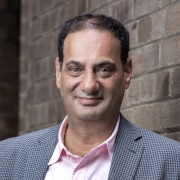Getting Millennials interested in super is no easy task
No matter what the superannuation industry does, it seems to have a negligible impact in getting Mllennials to take an interest in their superannuation.
How often do you hear the superannuation industry bemoan people’s lack of interest in their retirement savings? “It’s in their long-term interests to build their retirement nest egg. They should be engaged,” is a common refrain. This thinking especially applies to the young, whose desire to “live for today, not tomorrow” really seems to irk the industry. It's as if the industry is a disciple of George Bernard Shaw, who famously quipped: “Youth is the most beautiful thing in this world—and what a pity that it has to be wasted on children.”
Yet it seems no matter what the industry does, it has negligible impact in getting Millennials to take an interest in their superannuation. As one Millennial told a Choice report into superannuation, “You can’t access it till your 60 or something so it’s not something I think about really. There’s a lot more other stuff in my life now.”
That quote is telling – and it got me thinking. It might be heresy, but is the industry simply wasting its time trying to engage with Millennials? To a large degree, I suspect it is, but if the industry was more responsive to what Millennials want, then better engagement could follow (of which more later).
It won’t be easy. For the minority of Millennials who do take an interest in superannuation, they are likely to do so irrespective of how the industry tries to relate to them. For the majority, being engaged in a scheme that does not have a direct impact on their lives for three decades, at least, is simply a bridge too far.
Some in the industry believe making superannuation more accessible via technology is one way to tackle this indifference. I beg to differ. While technology will make the system easier to access, it still requires Millennials wanting to be engaged – and this is what’s lacking.
As the Choice report rightly argues, for Millennials, it’s that combination of living for the moment and a sense of infallibility that puts super in the too-hard basket. Add to this the fact that super is withdrawn pre-tax, the money is locked away, and a statement comes once a year – often via snail mail – and it simply compounds their indifference.
The result is they understand little about the options or opportunities that superannuation offers, and, more importantly, how much do you need in your superannuation to retire on. The level of ignorance unveiled by the Choice research extended to not knowing there were various kinds of superannuation funds and that they could even switch funds.
Interestingly, too, they are not looking for choices or to be educated. As one Millennial said, “I don’t want to know what all my options are, or what I could do. Just tell me what I should do.”
So, what will get them engaged? God only knows. Being able to easily see their balance on a regular basis (weekly, even daily) may be a good starting point – but maybe not. Connecting Millennials with what Einstein called “the eighth wonder of the world” – compound interest – could evoke interest. There’s nothing like seeing a growing balance to focus the mind, but then markets go up and down and one good market fall may cause them to disengage. Encouraging people to save more than selecting the best-performing portfolio is more likely to provide that growing balance.
Another way to engage them is by investing in assets that align with their principles at this age. It might be environmental issues, tech stocks or property, for example; the important thing is that it attracts their interest. However, this alignment of goals may not produce the best diversified portfolios or risk return trade-offs.
It’s worth remembering what Choice’s Millennial said, “retirement is a long way away”. And the evidence suggests most people really don’t start thinking about their retirement nest egg till they are in their early 50s. For Millennials, therefore, it’s more likely to be about fees and returns.
But isolating fees and returns as key tools to engage Millennials is no panacea. Technology may bring down the fees, but not necessarily improve returns. Investing in themes that are relevant to your values may not produce the best return. Are people willing to give up a bigger sum to invest in line with their values?
I suspect many super funds have not asked these questions, either internally and certainly not of their members. Indeed, as the Choice research showed, some Millennials surveyed believed super funds actually made it difficult to consolidate super accounts – a certain way to reduce fees.
What the industry should do is be willing to be far more engaged with its younger members, something I suspect hasn’t been front and centre of their thinking simply because the system is compulsory. And greater engagement does come at a cost – to members.
So, getting the balance right between engagement and cost requires the industry to do some serious thinking. One option, perhaps, is to engage members at critical junctions in their lives; starting a family, nearing retirement or changing jobs. But the reason must be driven by the member’s needs – not when the industry decides the time is ripe.
There’s no easy answer. And I suspect for most Millennials, it will never dominate their conversation at a night club. But that’s no excuse for the industry not to try – at the very least some of the solutions could be applied to those members who have an expanding waistline and have long lost any sense of infallibility.
George Lucas, managing director, Instreet








